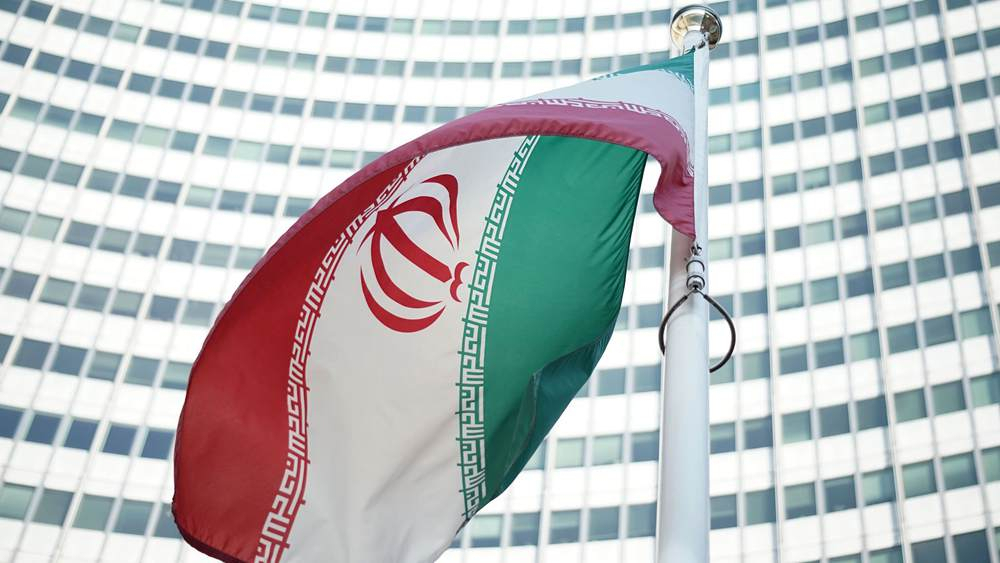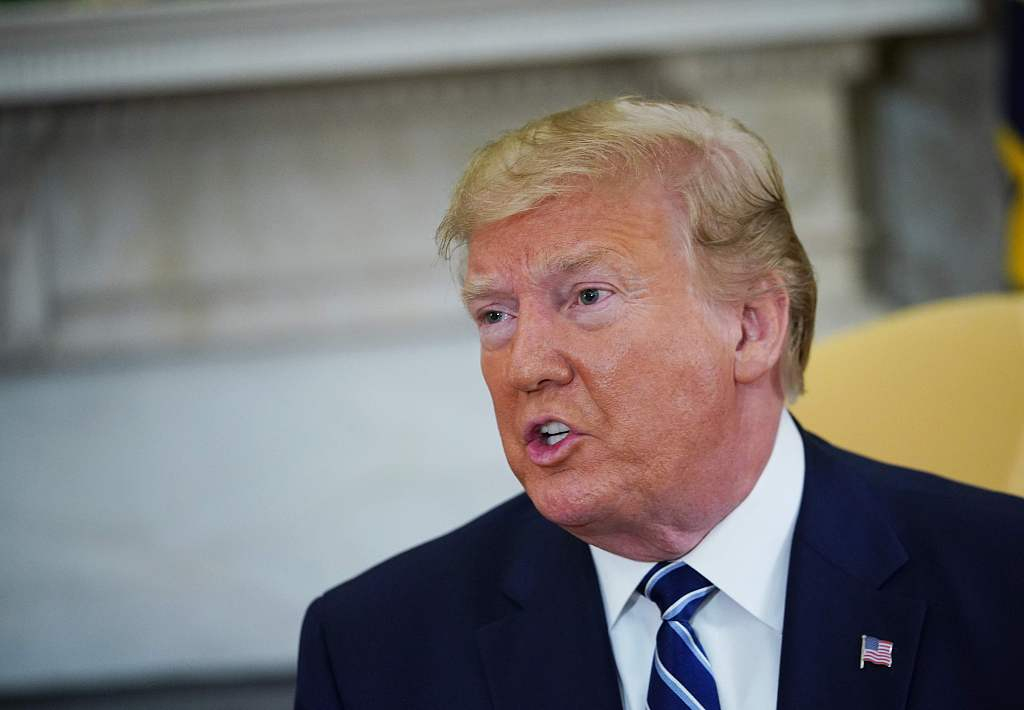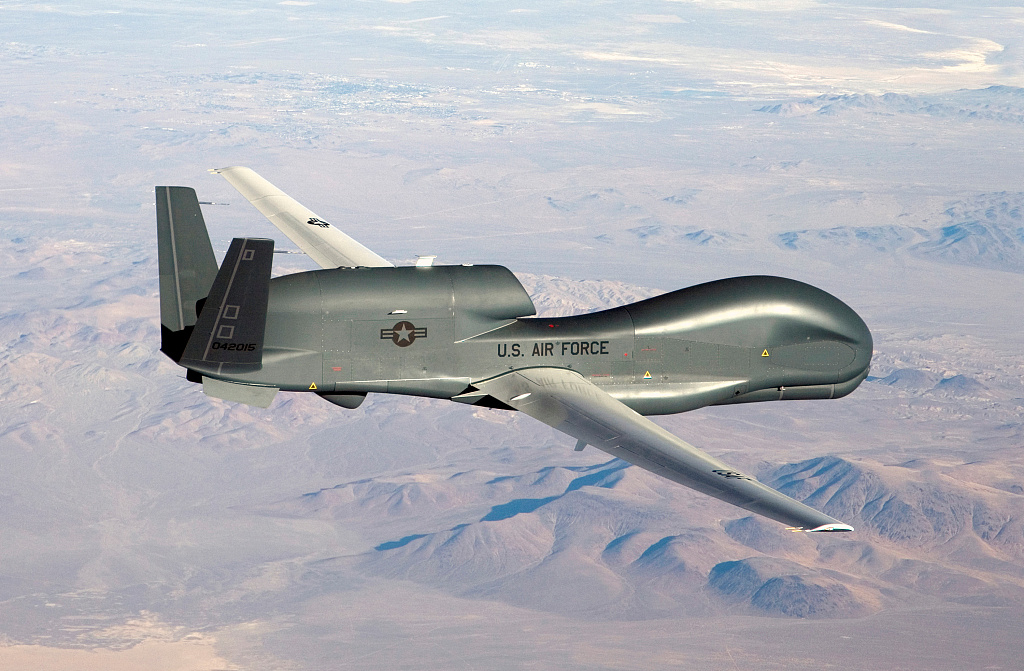

Editor's note: Tom Fowdy is a British political and international relations analyst and a graduate of Durham and Oxford universities. He writes on topics pertaining to China, the DPRK, Britain and the United States. The article reflects the author's opinion, and not necessarily the views of CGTN.
The U.S.-Iran crisis is continuing to escalate beyond measure. According to the Washington Post, the U.S. launched cyberattacks, under President Trump's approval, against Iran which caused the country's computer system that controls missile launches to malfunction.
Although reportedly calling off retaliatory strikes against Iran for the downing of a U.S. drone, Trump is now claiming he only "postponed" the strikes "at this time" – threatening the country with "obliteration" if the United States was forced into a conflict with Tehran.
As these tensions loom, the White House is further pursuing even more unilateral sanctions against the Islamic republic, vowing to force it to capitulate to American terms and become as what Trump and his aides have stated a "normal country"– the president having coined it in his slogan of "Make Iran great again."
Despite disagreements behind the scenes in the White House over what to do next, one should not play down the fact that the risk of conflict here is extremely serious, with the crisis having already suppressed the intensity and seriousness of the confrontation between Washington and Pyongyang in 2017.
Even if it does not purposefully want war as an outcome, as the White House continues to mercilessly threaten and provoke Tehran, the risk of a conflict arising from mistake or miscalculation is high. With Iran likely to resist and more willing to push America's boundaries, the administration seems to lack any kind of strategy on where to go next or how to de-escalate the situation.
Dangerous times are ahead.

U.S. President Donald Trump speaks during a bilateral meeting with Canada's Prime Minister Justin Trudeau in the Oval Office of the White House in Washington, DC, June 20, 2019. /VCG Photo
What exactly is going on here? Despite misleading information over its nuclear program, The Trump administration's policy on Iran is to end its struggle for regional hegemony in the Middle East against that of American allies, particularly Saudi Arabia.
In effect, they want Tehran to accept the status quo order and pacify the political power's revisionist ambitions, which has locked it in a series of proxy conflicts in both Syria and Yemen.
However, the administration has decided to do this by resorting to the most aggressive means possible, confronting Iran with extreme unilateral sanctions and the threat of outright war, believing it can be pressured to the point of implosion or political capitulation.
In doing so, Washington have dramatically escalated the stakes in recent months and have now created a crisis situation. When the president spoke of "obliteration" recently, one may be reminded of his threats to "destroy" the DPRK in 2017 with "fire and fury" in response to Pyongyang's nuclear and missile testing.
However, what is happening now is arguably worse as in many aspects the crisis has already escalated beyond rhetoric and bluffing.
Because Iran is not capable of attacking United States territory, some members of the White House are prepared to toy with using lethal force against the country, thus the "retaliatory strikes" which were canceled at the last minute.
In addition, Iran's willingness to shoot down an American drone also shows it is prepared to utilize force and press Washington's boundaries.
Given this, even if both sides do not truly "want" an outright war, there is a serious risk one could emerge by miscalculation. Major wars do not always occur deliberately. For example, if Iran has reasonable grounds to conclude that an attack is imminent by the United States (even if it is wrong), it may sense that its best chance of survival is to launch an offensive first.

An undated U.S. Air Force handout photo of a RQ-4 Global Hawk unmanned (drone) aircraft. /VCG Photo
In such a scenario, Washington will then assume Iran is pursuing an act of serious aggression and be forced to respond in a war like posture. Thus, the stakes are rose dramatically and by accident, a major war has broken out, which then becomes impossible to de-escalate.
In this case, if Washington's true intentions are not to start a war, but to simply "pressure" the country into submission with extreme threats, one may question what the White House's strategy for de-escalation is. Answer: There isn't one. Iran can only take such threats seriously and respond accordingly, which means the cycle is difficult to break unless Washington itself is prepared to de-escalate rhetoric.
While an all-out war against Iran would ultimately see America emerge the victors, it would be at tremendous costs. A study from the RAND Corporation found that owing to the country's enormous size and vast mountainous terrain, a successful occupation of Iran would require one million troops at an annual cost of 240 billion U.S. dollars to sustain, not accounting for insurgencies.
Therefore, this begs the question, what now? And how will this end? The idea that Iran can somehow be brought to submission on a series of unilateral American terms is not realistic, a foreign policy logic which has dictated the White House's approach to every single issue.
The result now is an increasingly escalating crisis. Trump is playing with fire, and the imagery of a hostile Islamist state makes it so easy to do so politically, but nevertheless this cannot void the potential consequences which may lie ahead.
(If you want to contribute and have specific expertise, please contact us at opinions@cgtn.com.)

Copyright © 2018 CGTN. Beijing ICP prepared NO.16065310-3
Copyright © 2018 CGTN. Beijing ICP prepared NO.16065310-3